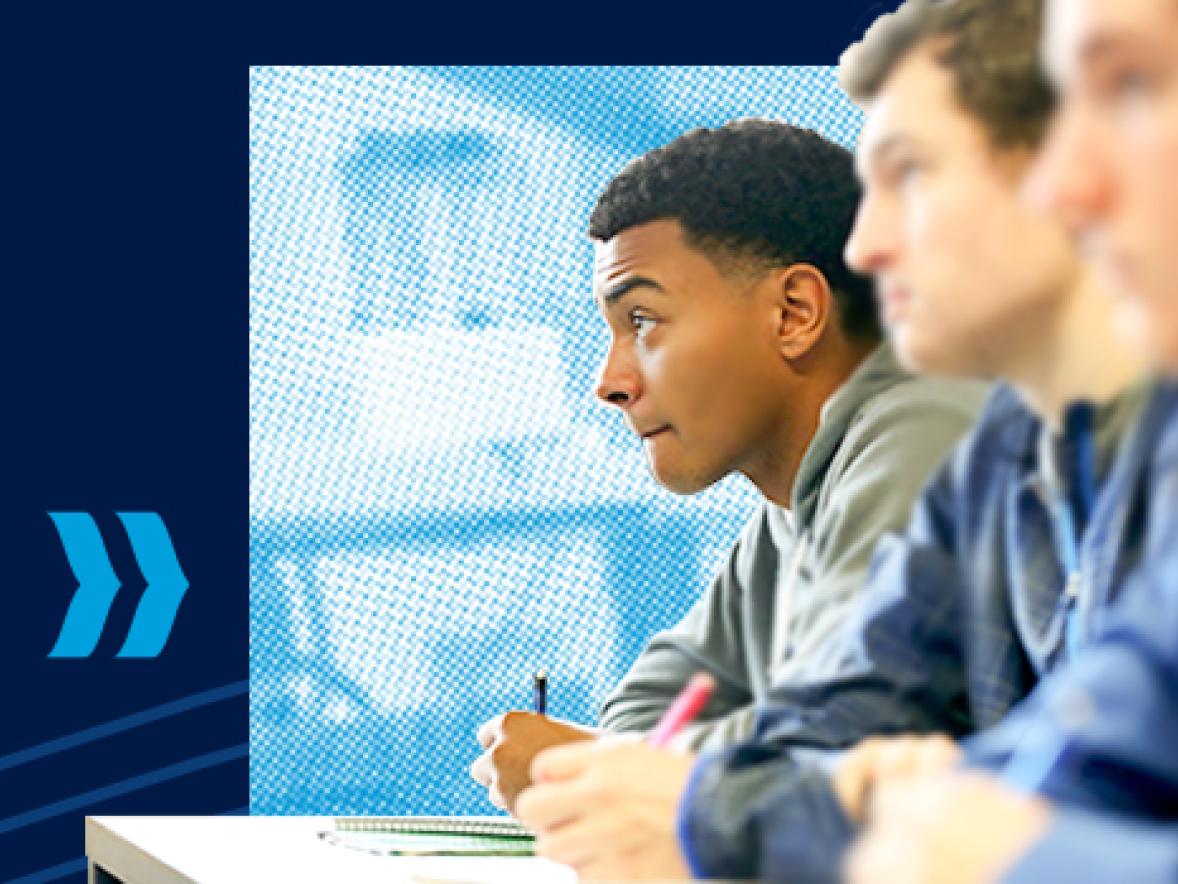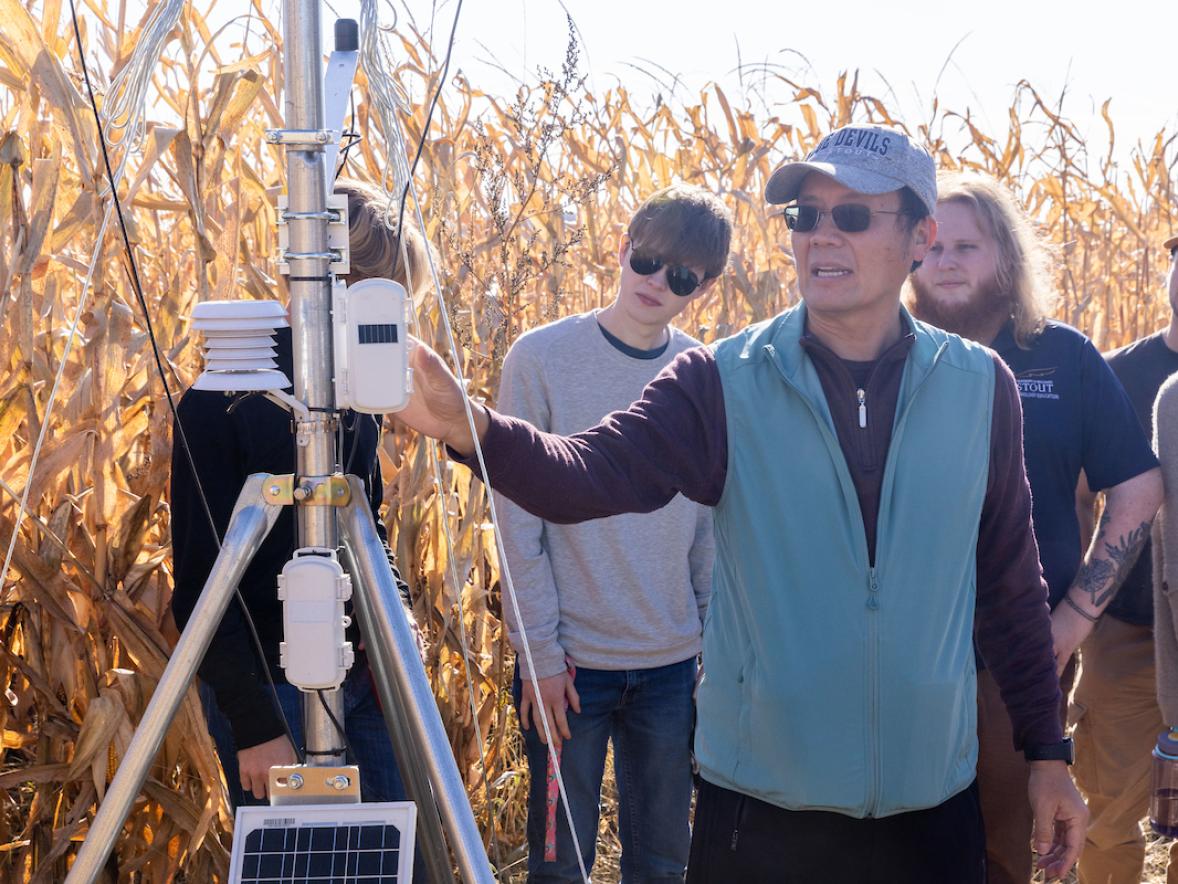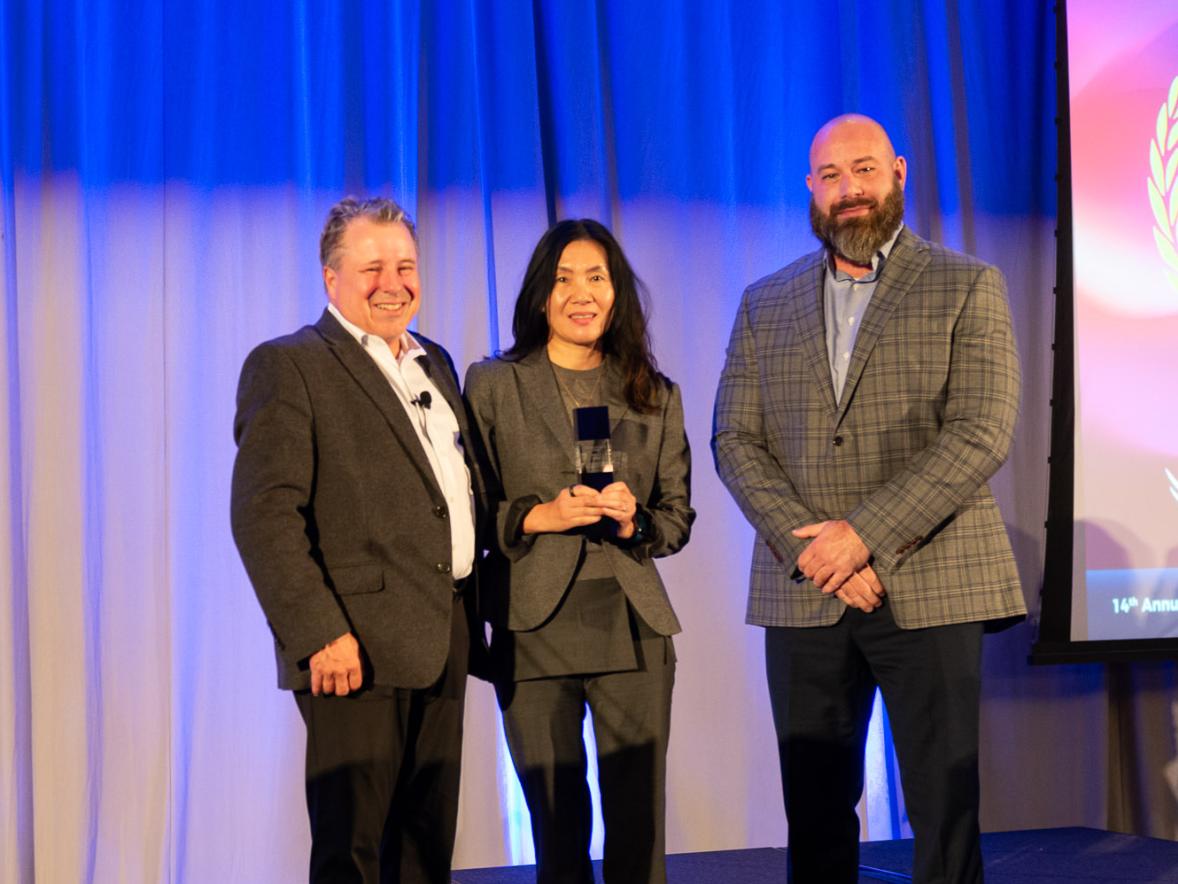Want to learn more about art on the University of Wisconsin-Stout campus?
Soon there will be an app for that.
Three UW-Stout students worked eight weeks this summer in the Digital Humanities Lab in Harvey Hall developing a Stout Mobile Augmented Reality Tour of Art, or SMARTArt app, using augmented reality that will be able to provide insight into works of art.
Jacob Karr, of Hudson, Brian Bauch, of Menomonie, both senior computer science game design and development concentration majors, and Harrison Kelly, of Eden Prairie, Minn., a senior game design and development-art major, worked together on the project with funding from the Menard Center for the Study of Institutions and Innovation.
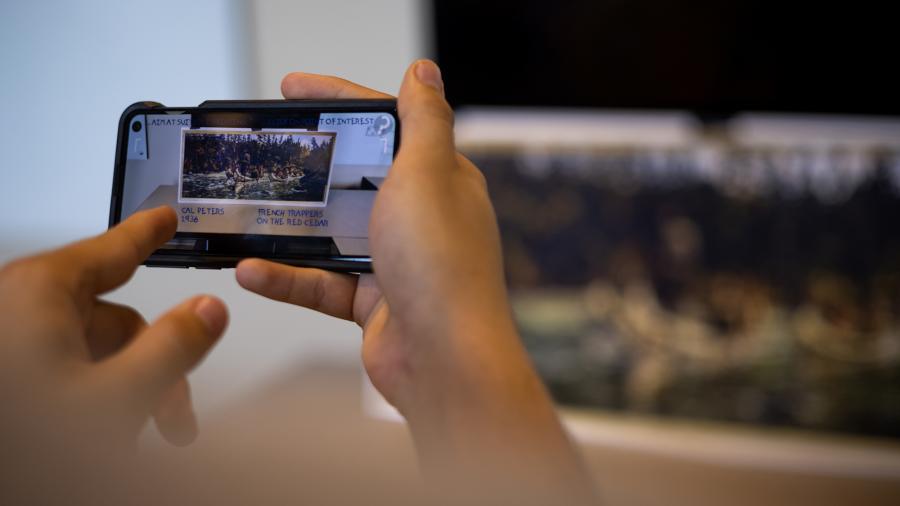
Using the app on a smartphone or tablet, artwork viewers will see an interactive overlay on the art that gives more information about the artist and the work through text, images, audio and video.
Two 85-year-old mural paintings by Wisconsin-born artist Cal Peters depicting a French fort and fur traders with Native Americans canoeing the Red Cedar River will be the first art integrated with the app. Digital humanities and art history students in the 2021-22 school year will help develop additional information on the paintings and their controversial history.
In 2016, the paintings were moved from common areas in Harvey Hall to the University Archives area of the library and a dean’s conference room after concerns were raised about them and their depiction of Native Americans.
Mitch Ogden, an associate professor and program director of professional communication and emerging media, came up with the idea for the app.
“We relocated the paintings, but we haven’t provided additional information to interpret them and explore the controversy,” Ogden said.
“With such a complex controversy and with so many perspectives to consider, how could we curate all that information? Augmented reality was the obvious tool. It allows far more information, far better than a plaque or brochure, that is both interactive and engaging.”
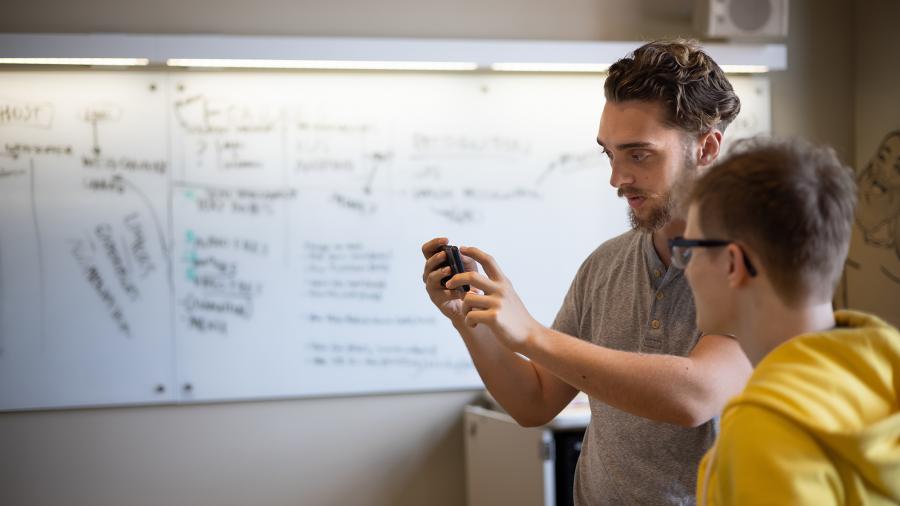
Ogden searched but couldn’t find an application, so he sought out funding from MCSII to have students design it. The project not only gives students experience, but it fills the need for more interpretation of the paintings and other artworks too.
Project deals with civil liberties
Tim Shiell, MCSII director, said the center was enthusiastic about the project.
“It deals with important civil liberties -- freedom of expression, artistic freedom and academic freedom; supports cutting edge student research and internships; and offers a tangible outcome with the app that has potential use at universities, museums, galleries and so forth,” Shiell said. “This is the essence not just of MCSII but UW-Stout as a polytechnic university.
“With so much art at universities and elsewhere being contested for many different reasons, it is important for universities to remain true to their fundamental educational mission,” Shiell added. “The app won’t end controversies about art any more than a class on politics or the economy ends controversies about politics or economics; it simply makes possible new educational opportunities. An augmented reality app offers a hyper-convenient and impactful way to educate people about controversial — and noncontroversial — works of art. The Cal Peters murals at UW-Stout provided a starting point, a spark to ignite the project, and we’re excited to see where it goes from there.”
The students enjoyed working on the project, finding it challenging while learning to work together using an Agile system to keep it moving forward by setting deadlines together.
“One of the challenges was making the interaction with the app look good and feel good to the user,” Karr said. “It allowed me to bring out the creative side of programming.”
Ogden said it was amazing to watch the students work together. “They always knew they would work through all the challenges to the end game. They didn’t know what the pathway would look like to get there.”
Students gain work experience
Working on a project for the university will provide them with experience for their resumes and proof that they can produce a product, Bauch said. “It honestly felt a lot more like game design than programming,” he noted. “I think that is what I liked most about it.”
Kelly said SMARTArt will provide more information on artworks. “Art has such a difficult way of perceiving it than most other forms of media. Everything you see can be decrypted differently based on the viewer. For one person it could be beautiful and well done and for another it could be horrific.”
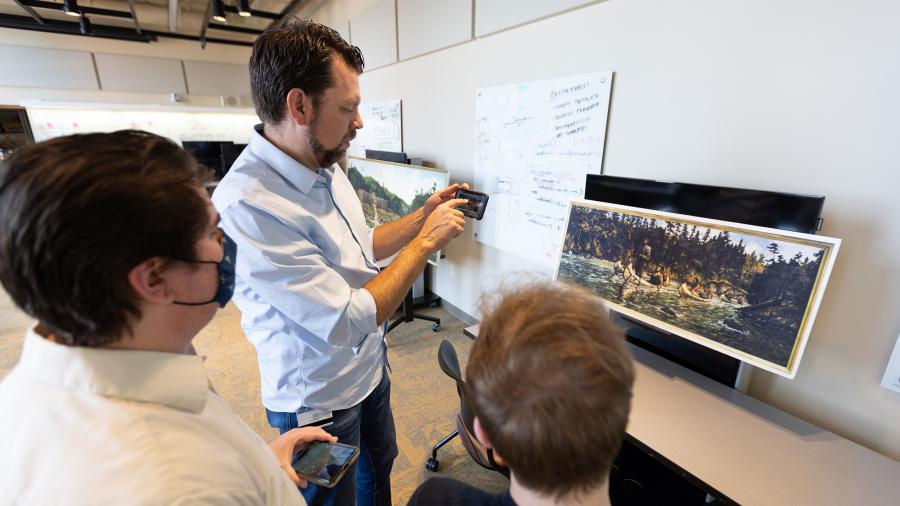
Ogden agreed. “We barely appreciate the art that surrounds us on campus, and we rarely discuss it. We get so little engagement with the art we see all the time.”
The app will give viewers a chance to delve as deep as they wish into the backstory of a piece of art, he added.
Shiell said the three student app developers surpassed expectations.
“It has been a truly impressive performance,” Shiell said. “The app will provide a very user-friendly platform to both those who view the art and those who program other art into the app. We will have a working app this summer and hope to support additional student work on the app in the future to enhance its current capabilities.”

